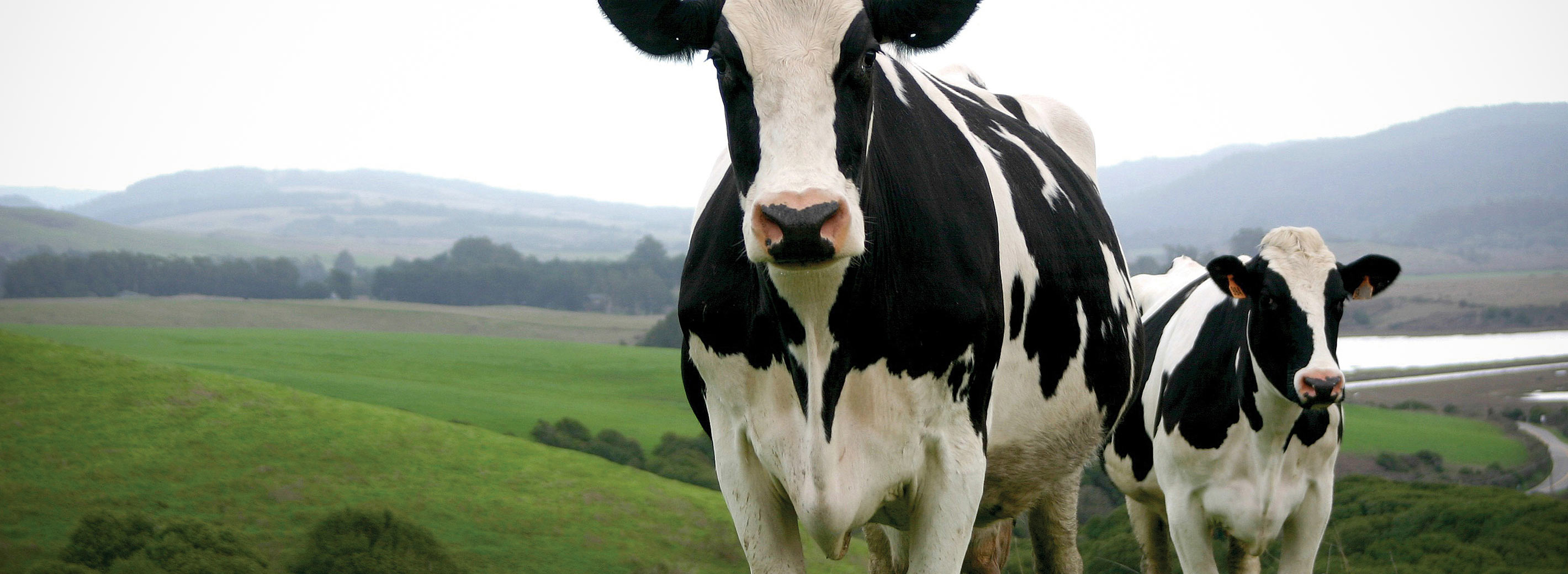Bravo Food Literacy Stories: How to Source Dairy from Local Producers
- by Peter Todaro

This year, the plant-based milk market is estimated to reach nearly $3B, climbing to 15% of fluid milk dollar sales. While oat, soy, flax, and almond milks abound, dairy milk continues to enjoy the lion’s share of the market — and our guests’ appetites. Dairy milk remains a staple in most Bon Appétit cafés and represents a significant source of potential year-round spend from Farm to Fork (F2F), our local sourcing program. As such, it’s worth unpacking the criticisms lobbed in dairy milk’s direction, why sourcing local dairy products might be more important than you think, and the practical steps teams can take to do just that.
Setting the Stage
While agriculture in the United States has skewed toward fewer, but larger, farms over the course of the last century, the dairy industry has been at the forefront of this trend. Since 1970, the number of dairy farms has declined from about 650,000, to nearly 25,000 in 2022, and average herd sizes have increased. While milk production has grown under these conditions, small farm livelihoods have not.
It’s widely appreciated, especially by Bon Appétiters, that the dairy industry has a significant carbon footprint due to the methane emitted by cows, but this fact obscures stark differences in emissions between large and small farms. According to the USDA, large industrial dairies tend to have higher carbon footprints per unit of milk, due to an array of industrial agriculture practices. While small dairy farms continue to decline, they are replaced by ever larger farms with higher carbon footprints.
If we can agree that supporting small dairy farms can benefit both local communities and the environment, the question for Bon Appétit teams might be how to best support those farms. We engaged with teams across the country to get a sense of how they have successfully partnered with Farm to Fork dairy producers.
Case Western Reserve University and Hartzler Dairy
“When I think about having good purchasing standards, it’s about more than just getting the product,” says Vincent Gaikens, campus executive chef for Bon Appétit at Case Western Reserve University (CWRU). The CWRU team partnered with Hartzler Dairy over a decade ago and currently buys all of their milk from the family farm, along with Hartzler’s famed chocolate milk and eggnog during the holidays.
The key to Vincent and the team’s success? Smart menu and purchasing planning on contracted products to ensure available funds to purchase products from local farmers. “Vincent and the team exemplify a saying I’ve often used,” says Vice President of Purchasing Theresa Chester. “Leverage what you can do with contracted products, so you have the means to do what no one else can in our Farm to Fork program.”
Vassar College and Hudson Valley Fresh
At Vassar College, working with Hudson Valley Fresh (HVF), an upstate New York dairy cooperative of small farmers, was an easy choice for Resident District Manager Stephen Scardina and the team. “From the start, it’s been a successful partnership,” says Stephen. “Students appreciate the taste of the farm-fresh, local milk,” he observes. An added bonus? Hudson Valley Fresh stops by Vassar’s Gordon Commons and holds educational tabling events for students.
Edwards Lifesciences and Rosehill Dairy
Joseph Davis, chef manager at Edwards Lifesciences in Draper, UT, echoes Steve’s sentiment. “As with any food product, the closer to home you can get it, the better it tastes. Plus, we reduce our carbon footprint, and our partner Rosehill Dairy even has a reusable container program, so we’re returning containers rather than sending them to the landfill.” For Joseph and the team, the switch to Rosehill was as simple as setting up a standing order, with no additional cost to the unit.
Joseph encourages other Bon Appétit teams to explore local dairy options. “If you’re hesitant, see if you can take a tour of the local dairy, do a side-by-side tasting,” he remarks. “When it’s local, we’re supporting the people who live in our communities — it’s more than just getting the Farm to Fork score up, it’s about looking out for those who share our communities.”
Emerson College, Emmanuel College, and High Lawn Dairy
Despite the advantages, making the switch to local dairy isn’t always easy. Local dairies may have limitations in production capacity, delivery frequency, or pricing. At Emerson College in Boston, MA, where the team partners with High Lawn Dairy, storage constraints and delivery schedules posed initial hurdles.
“Since High Lawn only delivers once or twice a week, we don’t always have the space to store large amounts of product at a time,” Resident District Manager Dawn Sajdyk explains. “As a way to work around High Lawn’s delivery windows, we supplement here and there with other model market dairy products to maintain our valued partnership.”
Also in Boston at Emmanuel College, another High Lawn partner, General Manager Robin Fortado and the team planned a few years in advance to complete the transition to local dairy. “We always seek out a Farm to Fork product, if we can,” says Robin. “And we can get creative with High Lawn’s ingredients — for example, their heavy cream is so rich that we don’t need roux or flour to thicken sauces.”
Communities over Commodities
While local dairy farm models differ, and pricing varies across the country, the unifying theme teams shared was open and honest communication with their dairy farmers. Through transparent communication, new relationships can turn into decades-long partnerships. “The actual connection with the farmer is the most important — otherwise it’s just milk, it’s just a commodity, and you don’t think about it,” says Vincent. “Dairy is part of the Farm to Fork tapestry you’re weaving, but you need to make the time to find it.”
This story ran in the Spring 2025 Food Literacy issue of Bravo, our company magazine. You can read more stories from the issue here.